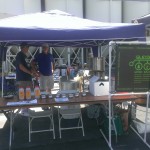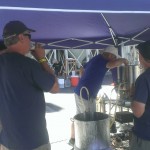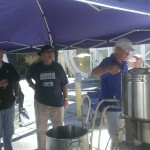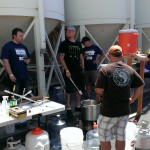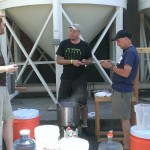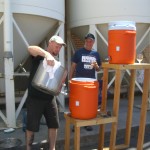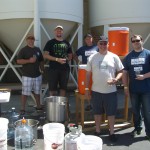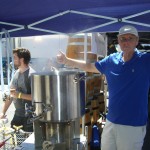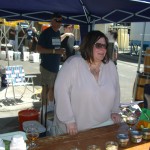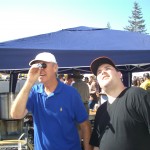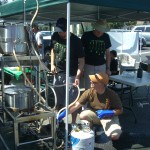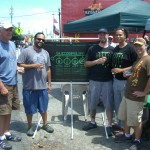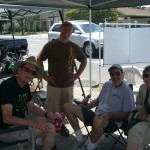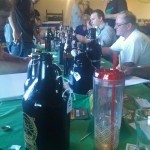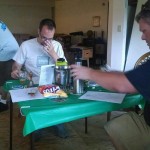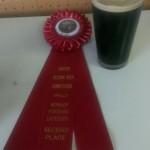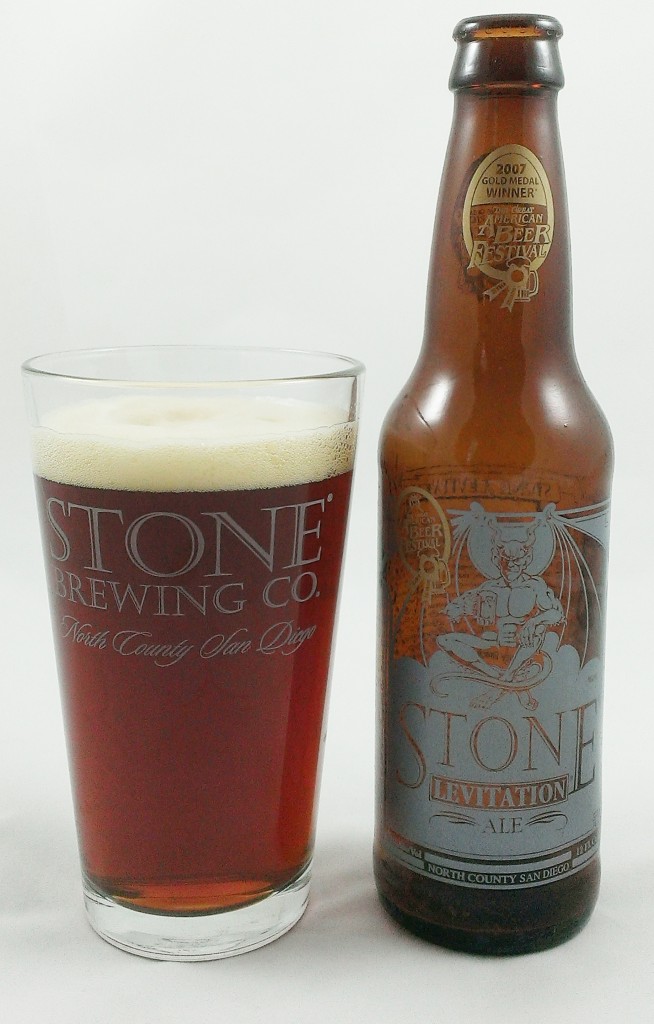Nick gave an excellent recap of the July brew day at MoreBeer – see http://www.sudzers.org/?p=1591 for a write-up and photos.
The group discussed the upcoming brew day at Gordon Biersch as part of the KraftBrew Fest, where Justin and Jim W will be brewing their versions of Gordon Biersch Oktoberfest, using water, yeast, and hops generously provided by Gordon Biersch.
Derek and Robin are hosting a club brew day at their house on August 9 to brew beers for NCHF. Derek will be brewing Zombie the Elder (Pliny clone substituting Citra for all hop additions), and Pranab will brew a Chai-spice Brown Ale.
Our August Thirsty Third Thursday destination on August 21 will be Fibbar MaGees in downtown Sunnyvale.
Mike C will be the chief organizer for this year’s Northern California Homebrewers Festival, Sept.19-21. We have 30 (!) Sudzers registered to attend!
Jim W gave a very informative presentation on The Art of Fermentation including yeast management, wort preparation, and temperature control – you can view his slides here.
Homebrew presentations included:
Jim W’s Darker Shade of Pale Black IPA
Tugood’s Flat #1 English Brown Ale
Paul’s Rauchbier
Aaron’s Nut Brown Ale
Carter’s Galay Pale Ale
Derek W’s Cherry-Oaky Brown Ale (with wort from the AHA Rally at Heretic Brewing)
Derek W’s 89 Degree Saison
Mike C’s Solid Citizen Imperial Saison
Charles’ Raison D’Etre Belgian Dark Strong
Vern’s Getting Toasted Breakfast ESB
Justin’s Hoppositional Defiant Double IPA
Justin’s Friggin’ Huge Wee Heavy
Derek H & Steve H’s Barrel Aged Prenuptial Imperial Stout
Tim’s 11% New World Saison with Sauvignon Blanc

